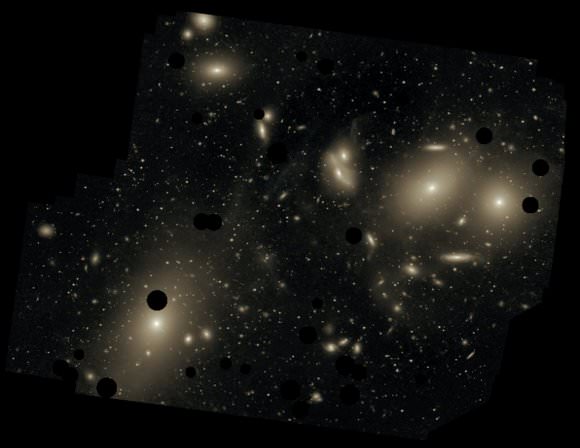[/caption]
What is the speed of gravity? It’s 299,792,458 m/s. Seem familiar? Yep, it’s the speed of light (in a vacuum)!
How do we know that that’s the speed of gravity? Not by direct measurement, yet, but by the great success of Einstein’s theory of general relativity (GR).
In general, because it is so successful, and because the speed of gravity in GR is the same as the speed of light, we can say we know how fast gravity propagates.
In particular, observations of the Hulse-Taylor binary pulsar (and other binary pulsars) show the mutual orbit is decaying (the stars are slowly spiraling in, and will one day collide). The rate of decay is exactly as predicted by GR, and is due to the system radiating gravitational waves. The rate at which the system is losing energy tells us how fast that gravitational wave radiation is travelling … and it’s c, the speed of light, to within 1%!
Working out how gravity, as geometry in GR, makes planets in our solar system orbit the Sun is somewhat tricky, and misunderstanding of the details is what’s behind an erroneous claim you might come across on many websites (that the speed of gravity is many millions of times c, or even infinite).
A very long baseline radio interferometric observation of a quasar as it passed near Jupiter, in 2002, lead two researchers to claim to have directly measured the speed of gravity (they found it to be c, plus or minus about 20%). However, this claim is controversial, with several GR experts claiming the analysis contains subtle flaws, and that what was actually measured is the speed of light. The method Fomalont and Kopeikin used might allow a direct estimate of the speed of gravity to be made in future, in the view of their critics, with big improvements in precision.
More to explore: Speed of Gravity (NASA), What is the speed of gravity? (Cornell University), and Does Gravity Travel at the Speed of Light? (University of California Riverside).
Gravity Moves at the Speed of Light is an interesting Universe Today story on the speed of gravity; Warp Drives Probably Impossible After All is a very different take!
And check out the Astronomy Cast September 18th, 2008 Questions Show episode for more on the speed of gravity.
Sources:
Nobel Prize Press Release
Living Reviews in Relativity
UC-Riverside
NASA
Cornell Astronomy


